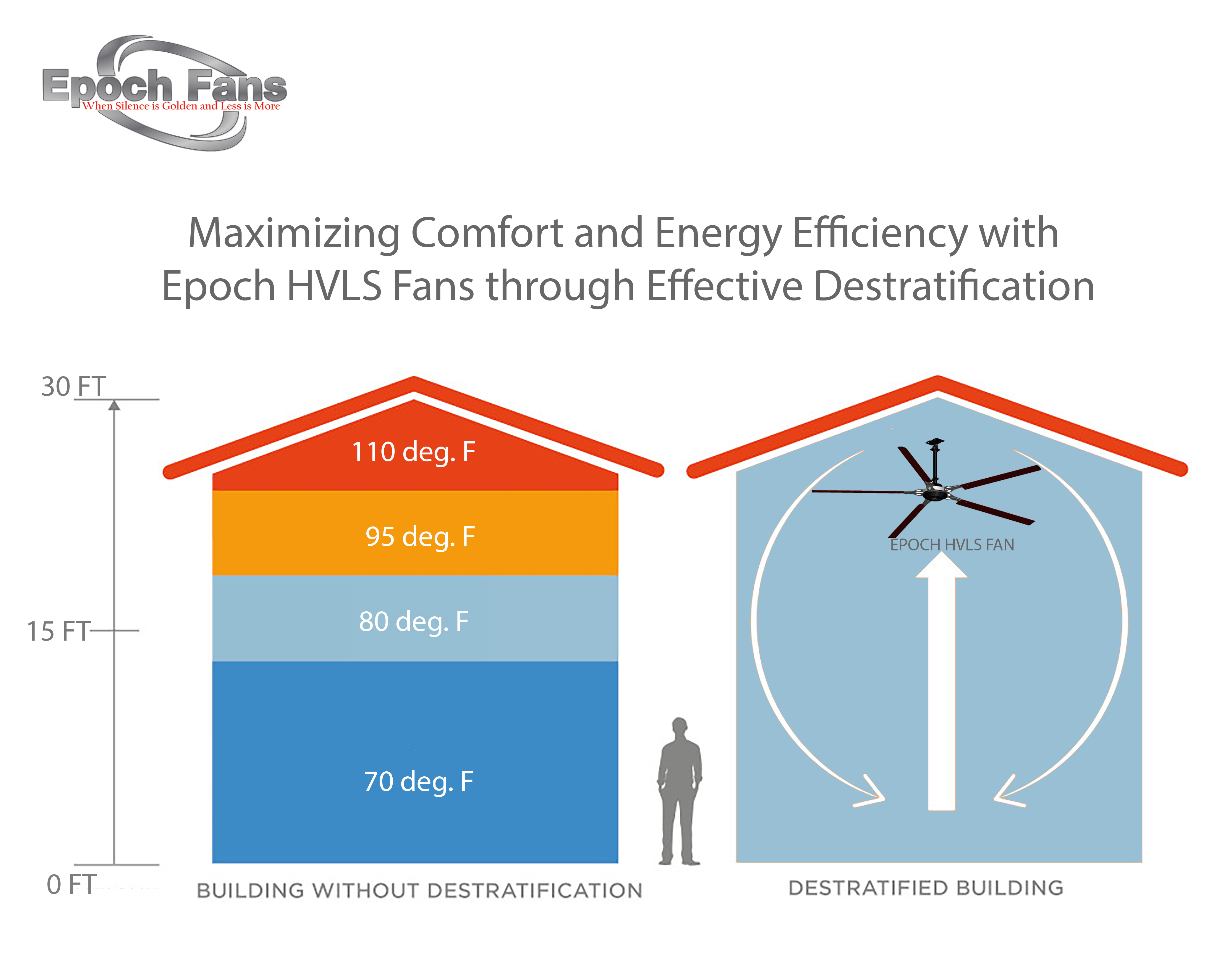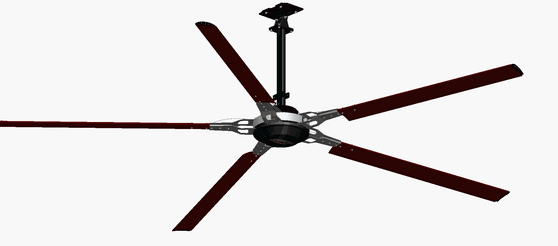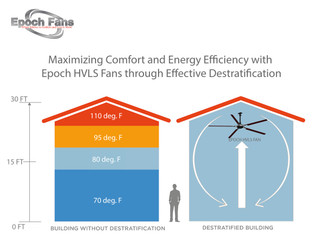
Engineers and architects at Falco eMotors constantly explore innovative solutions to create comfortable, energy-efficient indoor environments. One solution that has gained significant attention is the combination of Destratification and EPOCH High Volume Low Speed (HVLS) fans. When harnessed together, these concepts offer a powerful approach to enhancing indoor air quality, temperature distribution, and energy savings in large spaces.
Understanding Destratification:
Destratification is a process that involves reducing temperature stratification within a space, where warmer air tends to rise and accumulate near the ceiling while cooler air settles near the floor. This phenomenon is especially pronounced in areas with high ceilings, like warehouses, factories, gyms, and atriums. The temperature difference between the ceiling and floor can lead to discomfort for occupants, uneven heating or cooling distribution, and increased energy consumption.
The primary goal of Destratification is to create a more uniform temperature profile from floor to ceiling. Destratification eliminates hot and cold spots by gently mixing the air layers, enhancing overall comfort and reducing the workload on heating and cooling systems. This mixing leads to more efficient energy usage and cost savings.
Introducing EPOCH HVLS Fans:

EPOCH HVLS fans are large, slow-moving ceiling fans designed to circulate air effectively in large spaces. Unlike traditional high-speed fans that create turbulent airflow, EPOCH HVLS fans move slower, generating a smooth, consistent breeze covering a considerable area. Their significant blade size, often ranging from 6 to 24 feet in diameter, allows them to move substantial volumes of air with minimal energy consumption.
Synergy Between Destratification and EPOCH HVLS Fans:
When destratification and EPOCH HVLS fans are combined, the results are impressive. EPOCH HVLS fans help to break up the stagnant air layers, facilitating the mixing of warm air from the ceiling with cooler air from the lower levels. This blending process mitigates temperature differences and prevents excessive heat accumulation at the top of the space. As a result, the entire area experiences a more uniform temperature, enhancing comfort for occupants and optimizing the operation of HVAC systems.
Additionally, the combination of Destratification and HVLS fans contributes to energy savings. HVAC systems can operate more efficiently by eliminating the need for excessive heating or cooling to counteract stratification. Studies have shown that using HVLS fans alone can allow for thermostat adjustments, potentially leading to energy savings of up to 4-7% per degree Fahrenheit.
Applications Across Industries:
The benefits of Destratification and HVLS fans extend across various industries. In industrial settings, these systems improve working conditions for employees by preventing temperature fluctuations and ensuring consistent air quality. In commercial spaces, such as shopping malls and exhibition halls, the enhanced comfort provided by these systems can lead to more extended customer stays and increased business. Educational institutions, airports, and sports facilities can also use the improved indoor environment to create more pleasant and inviting spaces.
Conclusion:
Destratification and HVLS fans are a dynamic duo in indoor climate control and energy efficiency. By addressing temperature stratification and promoting proper air circulation, these systems create more comfortable and productive indoor environments while reducing energy consumption. Whether in expansive warehouses or bustling commercial spaces, the synergy between destratification and EPOCH HVLS fans is a testament to human ingenuity in creating sustainable and comfortable spaces.

